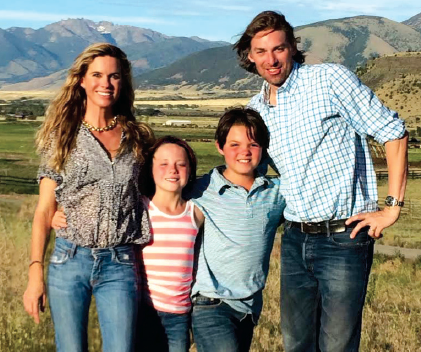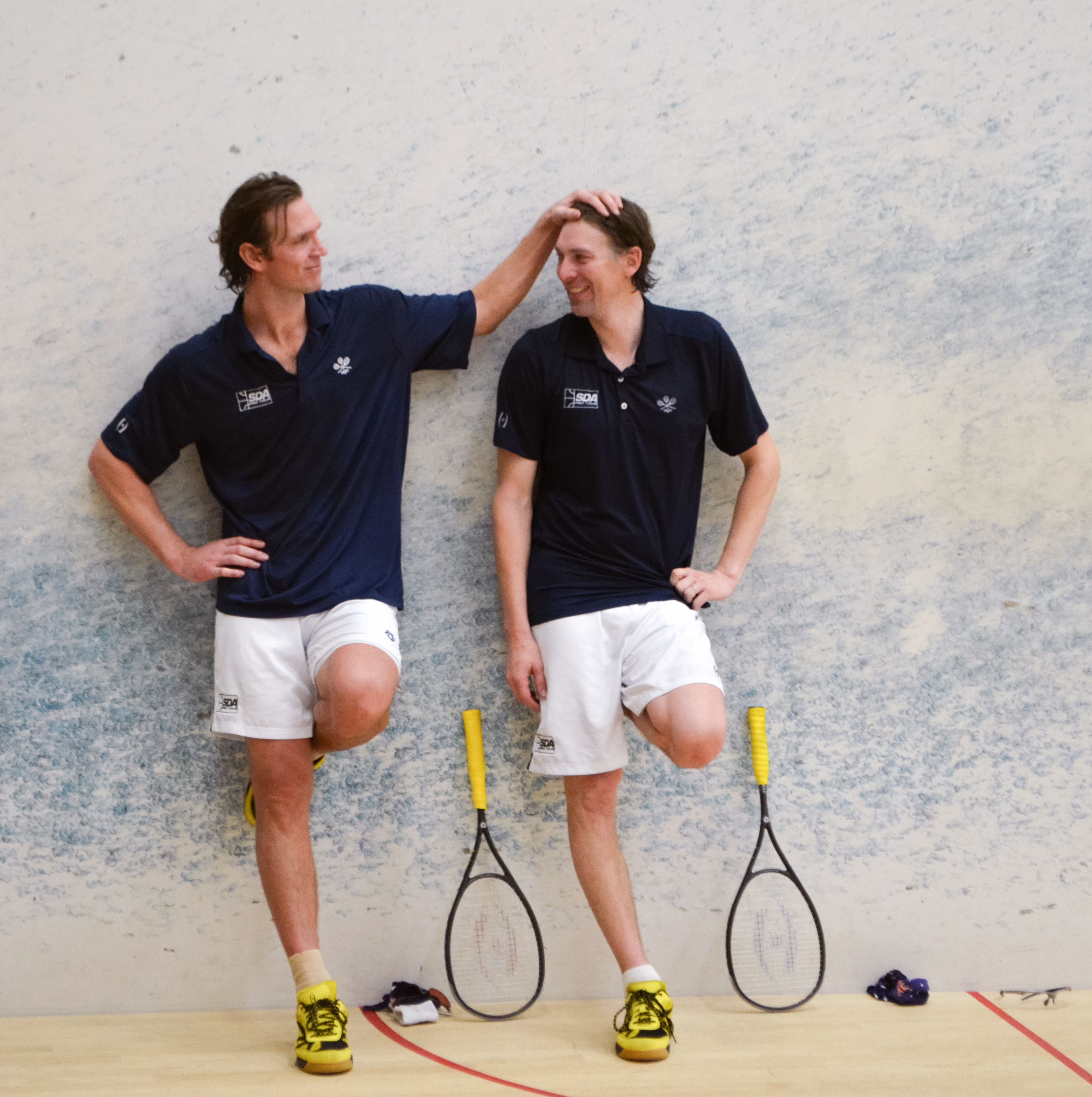
by Chris McClintick
They almost withdrew. It was the title they wanted most and the last to elude them on the SDA tour. As the 2015 Briggs Cup was starting, Damien Mudge was nursing a debilitating pinched nerve in his right foot. He was far from 100%. Ben Gould’s parents, Joe and Joy, traveled from Australia to see their son play professional doubles for the first time in a career spanning over a decade, and it now could be for naught.
Gould had never seen his partner struggle as much as he did in their first match against Matt Jenson and his former partner, Preston Quick. Mudge used the wall for support when he had the opportunity and calculated each step to move effectively on the court without inflicting further harm. Mudge knew a loss would mean that the last professional match with his partner of five years, a friend of twenty-five years, would end on a sour note.
Together Mudge & Gould had captured every major title on the tour except the Briggs Cup. The Briggs, a biennial event and the largest prize money event on tour with $100,000 in the purse, would be the capstone to one of the most dominant partnerships in U.S. squash history.
Mudge’s foot improved. The thirty-nine year-olds progressed through the draw to the final; however, they had always had bad luck at the Briggs. They lost in the finals in 2011 to Manek Mathur & Yvain Badan and to Paul Price & Clive Leach in 2013. Mudge was back to his best by finals night, alleviating Gould’s need to cover most of the court. They won in a decisive three-game match over Mathur & Badan.
Gould’s squash career and their partnership were complete.
—
Bougainville is the largest of islands in the Solomon Archipelago, an autonomous region of Papua New Guinea. The 3,600-square mile isle has 175,000 citizens and is covered by rainforest which envelope the spine of volcanic mountains running through its center.
In 1969 a discovery of vast copper, gold and silver deposits on Bougainville led to the establishment of the world’s largest open cut mine. The town of Panguna sprouted near the mine, and in 1972, Joe Gould, a recruiting manager for Bougainville Copper Limited, brought his wife, Joy and their daughter Samara, to Panguna, expecting to live there for a few years but stayed until 1989. In 1976, Joy returned temporarily to Australia and Ben was born before she and her new baby returned to Panguna.
The close-knit, multi-national community had everything a family needed. Everyone knew each other. The kids were enrolled at Panguna International Primary School. The town had an athletic facility with a gym, swimming pool, two tennis courts, basketball courts, sporting field, indoor cricket facility and three squash courts.
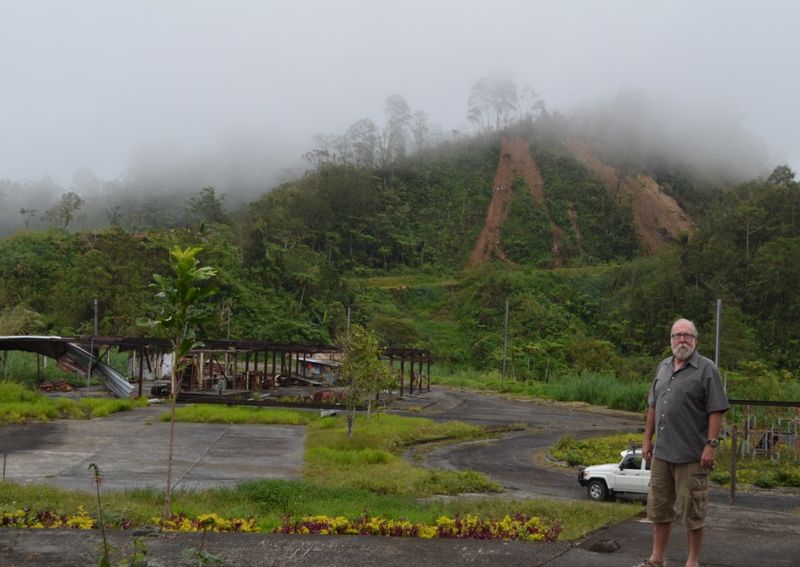
A former Aussie rules football professional with the West Torrens Eagles in Adelaide, Joe Gould passed down his love of sport to his son. When Ben was five, they spent regular time at the squash club, where Joe first put a racquet in Ben’s hand. As Ben grew older, he had a small group of friends who played squash together everyday after school. Unusual for a small town of 1000 people, Panguna had a healthy squash community.
When he was twelve, Ben followed his sister’s footsteps by going to boarding school in Adelaide; a school chosen because it was the only one with squash courts on campus. The twelve-year-old island transplant found it difficult to assimilate to boarding school life. He found refuge in those courts, going there every day after classes. There he met the Jenson boys, Dan and Matt, future squash pros, whose mother, Viv, was in charge of the program.
Viv encouraged Ben to play in his first organized tournament in Australia. In the first round of that tournament, the then diminutive Ben stepped on court to look up to a giant of a twelve-year-old. The intimidating figure smashed the ball harder than anyone Gould had played against and wiped the floor clean with the boy from Panguna. His name was Damien Mudge.
Meanwhile, Bougainville erupted into civil war. The PNG government deployed a defense force to Panguna and the primary school soon became barracks. Towards the end of 1989, mine employees and families—including the Goulds—evacuated the island; the Goulds reunited in Adelaide. Over the next decade, Panguna was on the front lines of a full-scale civil war, which claimed an estimated 20,000 lives—the largest armed conflict in Oceania since the Second World War.
—
Now with the family back in Adelaide, Ben’s early squash career continued to take shape. Continuing to play several more tournaments in Adelaide, Gould was invited to join the coveted South Australia Sports Institute (SASI). Gould considered it an opportunity not to be wasted. He rarely missed a session and made the most of the program.
As training intensified, so too did Gould’s motivation. A normal week involved daily morning and afternoon sessions before and after school. After high school, Gould started a six-year architecture program at Adelaide University.
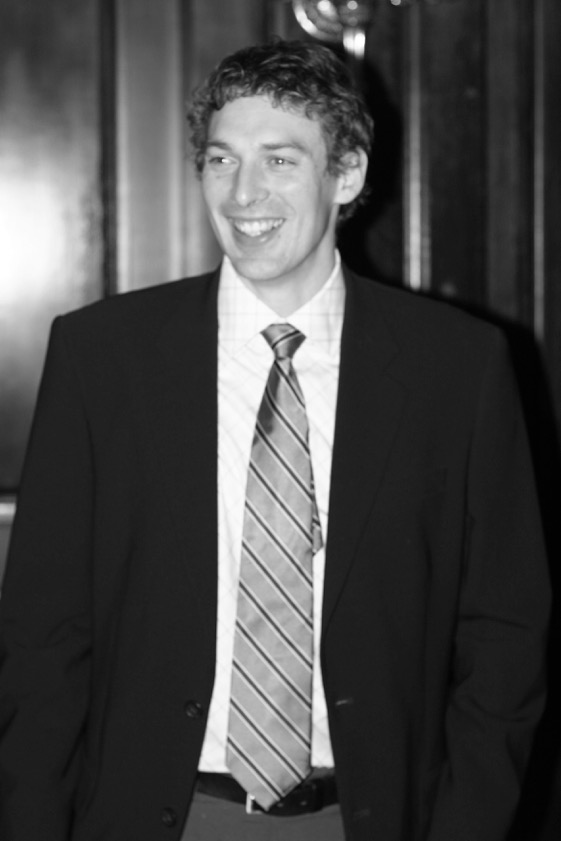
Towards the end of his first college degree, a taller Gould started to excel on the squash court. He went from ranked eleventh in the U19 nationally to the top ten for Australian seniors. Gould’s level of play eventually earned him an opportunity to join the Australian Institute of Sport (AIS) with Coaches Rod Martin and Geoff Hunt.
“One of my early goals was to be selected by the AIS; it was a huge accomplishment for me at that time,” said Gould who joined the institute with the likes of Anthony Ricketts, Stewart Boswell, Dan Jenson, Paul Price, Byron Davis and Cameron Pilley.
In 1998, chronic fatigue syndrome struck. Gould was towards the end of an intense, two-month stretch of playing consecutive tournaments. Back in Australia for a final pro event, he competed against Ricketts in the semifinals. It was a marathon match stretching to five games. Gould’s body broke down and collapsed on court as cramps crippled his body.
Two days later he went back into training as usual but had no energy and didn’t understand what was immobilizing his body. The coach instructed him to go home. He didn’t get out of bed for a month. “I could not move. My body completely shut down.”
“After the initial illness, there were times I’d start to feel okay, but as soon as I attempted to train, the symptoms would return, and I’d be stuck in bed again. I kept trying to play through it for a long time until I just couldn’t do it anymore. I remember playing two small pro events in Victoria. I won both of them, but every single day, just waking up was a battle.”
Gould didn’t know what was happening to his body and turned to experts in the field. The specialist’s suggestion was to take an extended period of time off. So he did just that.
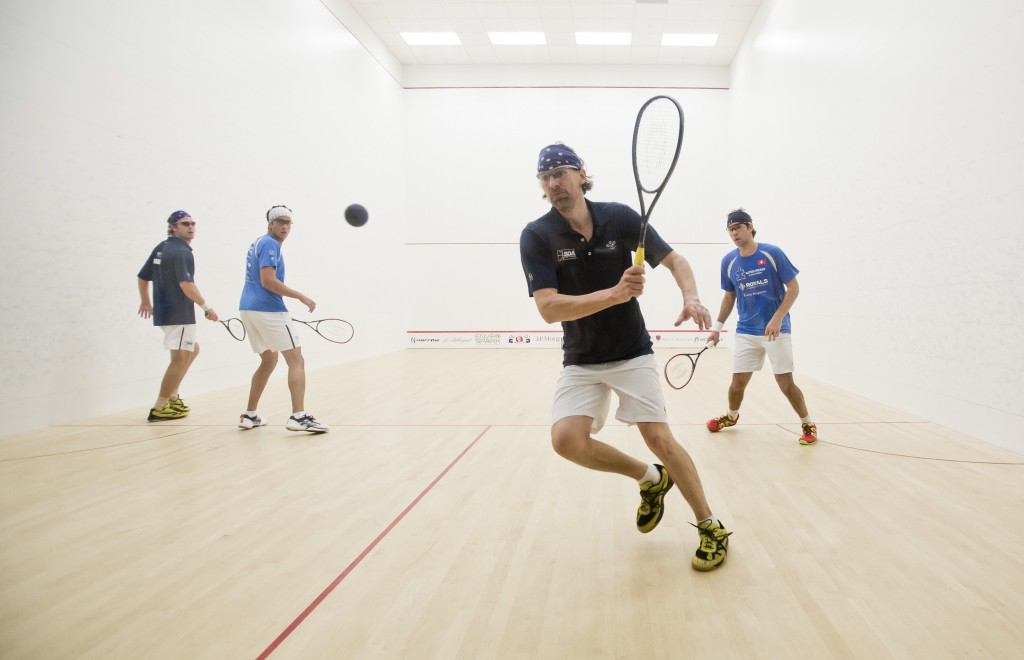
“I was devastated,” said Gould. “I was in my early twenties. When you commit your life to playing sport as a career, and a major setback like that occurs, it’s very difficult to digest, especially when I felt like my career had just started to pick up. In my junior years, I had always been a step behind other juniors my age like Mudge, Price and Palmer, but in my first few years playing senior events, I had finally started to feel like I was making some progress.”
Gould’s recovery started off with ten-minute walks, building up over time to twenty-minute runs. This was nothing compared to his past years of training, but he was, nonetheless, pleased with his progress. Gould asked his doctor if he could play a local event. He played well and lost in the final against Dan Jenson, after which he walked off court and felt fine. Halfway through the drive back to Brisbane though, it happened again. Gould returned to Adelaide and went to the hospital. He stayed for a week. He lost substantial weight and his lungs filled with fluid. His time playing squash singles was over.
“I was devastated again because I thought I had gotten through the worst of it,” Gould said. “My body totally collapsed again. Those next six months were really difficult for me, because I didn’t know what to do with myself. I couldn’t train. I went from being one of the fittest squash players to barely being able to walk around the block.”
—
In 1997, Damien Mudge had also lain bedridden with chronic fatigue syndrome. He slept for fifteen hours a day, and collected disability benefits. Like Gould, Mudge had committed everything towards being a touring squash professional, but was forced to shelve his pro career because of the same illness. Mudge began to search. He sent a fax to Gary Waite for inspiration.
“I had trained with Waite in Canada, stayed with his family, and felt like I had a good connection with him.” said Mudge. “I sent a long-winded fax about how I admired him, and told him everything I was going through. In typical Gary fashion, I didn’t hear anything back for two weeks. I was thinking, ‘That’s awesome, I just spilled my guts out to you and you have nothing to say for it?’ A couple of weeks go by, and he faxes back and says, ‘Call me, I’ve got a job.’ I thought, ‘I’m sleeping fifteen hours a day. I can’t even train. What do you mean, a job?’ So he said ‘Well you have nothing to lose, right? How about you just jump on a flight and if it doesn’t work out you can just go back to Australia.’ So I was like, ‘fair enough.’”
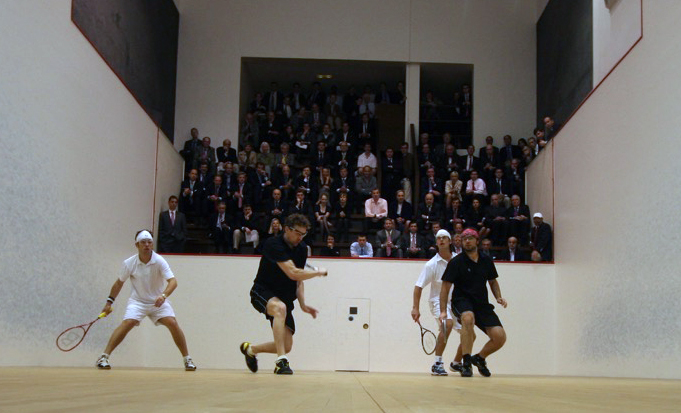
Mudge began as Waite’s assistant professional at the University Club of New York in 1998. Mudge recovered from chronic fatigue and also caught the doubles bug under Waite’s tutelage. In early 2001, Mudge received a call from Gould. He knew Mudge had battled chronic fatigue, and asked for advice. Mudge’s advice was simple. Get out of Adelaide at all costs. A change of setting had been the best thing for Mudge.
Gould began looking for job online and found a vacancy at Heights Casino in Brooklyn, which at the time was led by Mark Devoy. He emailed Devoy asking for more information about the job. Devoy remembered Gould having
seen him play in New Zealand. The job was his if he wanted to pursue it.
“I phoned Damien again and his response: ‘Just do it.’” Gould said. “I was very hesitant based on my energy level, yet was motivated at the thought of being back on court, even if it were in a totally different capacity”.
—
He bought a one-way ticket to the United States, because it was all he could afford and landed in early September, 2001. Gould first stayed with the Brewster family in Brooklyn Heights as he searched for a New York City apartment.
On September 11, Gould woke up to a different New York. “The city and world was in shock. There was part of me that just wanted to immediately return to Australia. And I definitely contemplated that option, but there were no flights. I was thrown off, didn’t know what was going on, and didn’t know what to do. Thankfully, I stayed.”
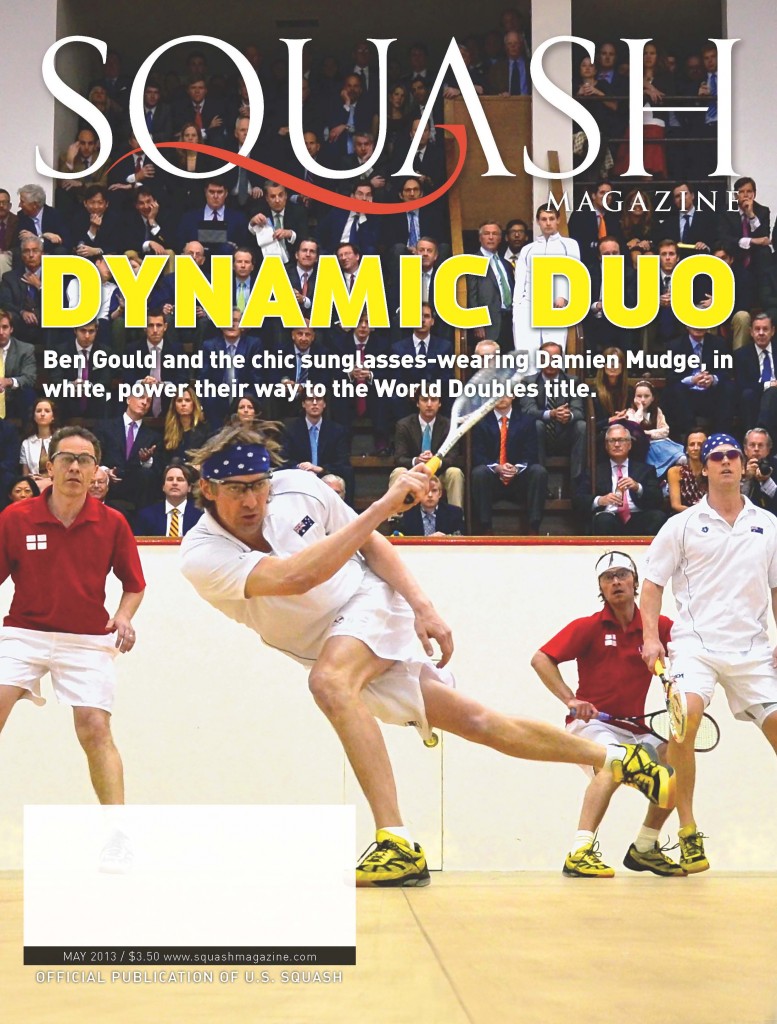
The next week, he found a small studio apartment near the club. Over the next two to three months, he found a routine that started the road to recovery from chronic fatigue. He would give a lesson, then rest for an hour. He still struggled with the illness and felt drained after the long days. All he did was eat, coach, and lie in bed. But after a few months, his health started to improve.
Early in his tenure at Heights, a threesome approached him to play doubles when their fourth couldn’t make it. Gould declined; he didn’t know the rules or what to do on a doubles court. Devoy encouraged him to play. “Go on, you’ll be fine,” Devoy said. “Just hit every ball as hard as you can.” Gould did just that: in the first game, he hit his own partner with his racquet, leaving him writhing in pain on the floor. He thought, “I’m going to get fired.”
After his traumatic introduction to doubles, Gould stayed away until he was asked to play in the Union Club of New York’s member-guest. He teamed up with Dan Oliver, and was given a +7 handicap. After a difficult opening match, they began to get the hang of things and went on to win the tournament so handily that teaching professionals have been banned from competing in the tournament ever since. More importantly, Gould had caught the doubles bug.
Towards the end of 2001 and into the beginning of 2002, He started hitting on the doubles court with John Churchill, an American pro at the Heights Casino. After playing a few events with Churchill, Gould caught the eye of left-waller Eric Vlcek, to whom Gould committed the 2002-2003 season. With Vlcek on the left, Gould cemented his position on the right wall with a rocket forehand. He played everyday. He took each pro-am match seriously, looking to spend as much time on court as he could,
For the next couple of seasons, Gould partnered the left-waller Preston Quick. Quick & Gould rose up the rankings that first season together until they solidified themselves as the No. 2 team on tour. Their first breakthrough came in the final of the 2005 Big Apple Open, where they defeated Waite & Mudge, ending a Waite & Mudge winning streak spanning sixty-four matches and nineteen titles. That victory pushed them to World No. 1 for one month, before Waite & Mudge reclaimed the top ranking.
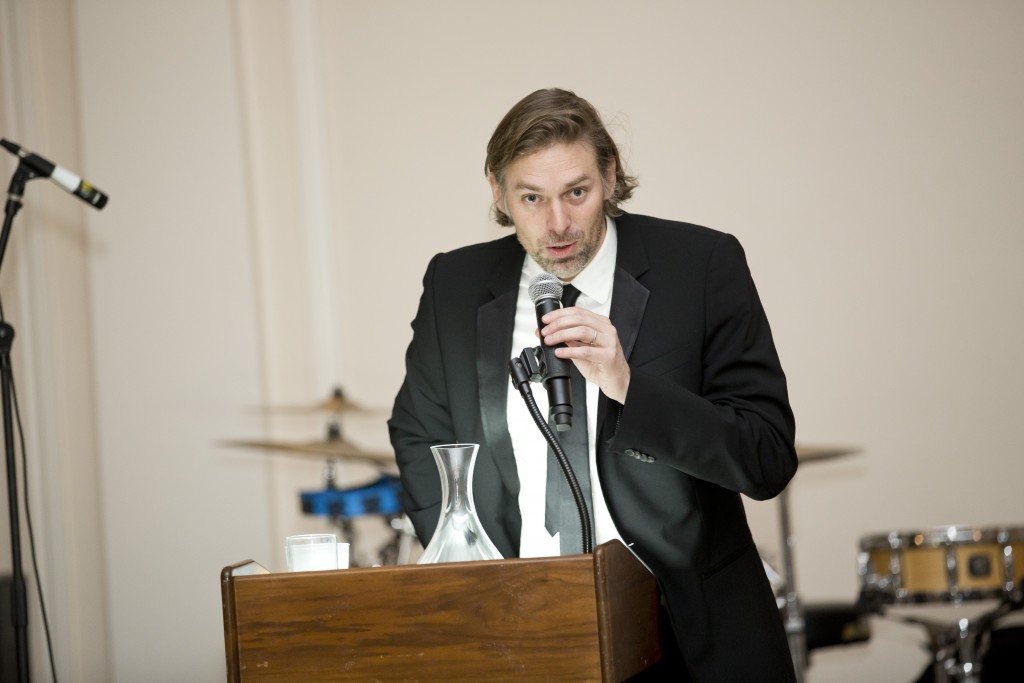
Gould then joined up with Paul Price, a fellow Australian. From October 2007 through the end of the 2009-2010 season, Price & Gould and Waite & Mudge captured every one of the thirty-four full-ranking pro events, with each team winning seventeen, and Price & Gould having a 9-8 advantage head-to-head in their seventeen finals.
As Gould’s partnerships shifted, so too did his home clubs. He went from the Heights Casino to the Union Club, to become the assistant professional under Scott Butcher at the Racquet & Tennis Club. In 2006, Gould received a job offer from the new renovated Sea Island Resort in Georgia. After one year, as he was halfway through constructing a home, he received a call from Butcher who was moving back to Australia. Gould dropped everything and went back to New York for his dream job as the Head Squash Pro at the R&T. There, Ben met Morris Clothier, whom he deems to be one of his most important confidants, friends and mentors.
It was also during this tenure at the R&T that Ben lists one of his proudest accomplishments, his instrumental role in the formation of the SDA Pro Tour. “Kevin Luzak, Morris Clothier, Mark Hayden, Peer Pedersen, Mark Dowley, Rob Deans and Patrick Turner were instrumental in helping re-brand the Pro Doubles Tour,” Gould said. “Although difficult and controversial at the time, I am really proud at what we have built”
—
In 2010, Mudge’s partner, Viktor Berg, took a hiatus, and Mudge approached Gould to partner ahead of the 2010-2011 season. The next doubles dynasty began.
Mudge & Gould were pillars. Their massive, 6’3 and 6’2 frames draped with shoulder-length hair, covered so much of the court. They had sheer strength. They also had finesse, a seasoned wisdom of varying shot selection as opportunities arose. They conquered the SDA tour with an undefeated first season and posted an overall match record of 189-7 while grabbing fifty-five titles. For five years, their World No. 1 reign held fast.
The only way to beat Mudge & Gould was to push them to five games, all while absorbing the powerful, high-paced onslaught. Only three teams beat them on multiple occasions. For Price & Clive Leach, they needed Price’s impeccable shot-making to be on point for the entire two hours, like in the 2013 Briggs Cup final.
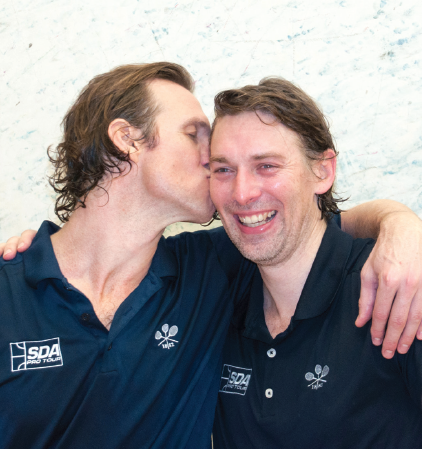
Off court, their partnership spanned a period during which the Aussies were the head professionals at two of New York City’s premier clubs located just blocks away from each other, the University Club and Racquet & Tennis Club.
In the spring 2015 Gould announced his retirement, resigned from his post at the R&T and moved to Boulder, Colorado. It wouldn’t have happened if it weren’t for Bono. A devout fan of the Irish band U2 (he caught more than a dozen gigs on many of U2’s tours), Gould flew out to catch a show with a friend in Denver during the band’s 2011 tour. His future wife, Kim, sat a few seats away from them and their groups of friends mingled during the show. She owned and operated an art consulting business that required her to travel to New York City often. They had dinner in New York the next week. Two years later, they married. Unlike U2, Gould found what he was looking for.
“It’s been great.” said Mudge, who will continue playing on the tour. “It’s going to be sad not playing with him. He’s such a solid guy. He’s always got my back. I’ve always got his back. He’s very busy now with his family and new line of work. We’re in different stages in our lives.” Mudge recalled some of the nicknames he used to call Gould when they were younger, such as coathanger, jabbing at his broad shoulders, or dreads, aimed at his hairstyle in early years, or stringer given his lanky frame as a teenager.
“It’s been a fantastic road, it really has. The squash will be here when we’re gone. But our relationship is the most important thing. You can compete with someone at the highest level in sport, but that’s not as powerful as being successful with one of your best friends. That’s how I view Ben. It’s been quite a ride.”
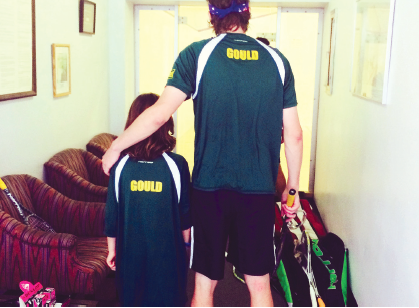
A lachrymose Gould couldn’t help but shed a tear at the Briggs. “I’m trying not to think about that now,” he said. “I’m tearing up just talking about it. It’s going to be tough. It’s going to take a while to sink in. Hopefully it won’t be our last time. Who knows, maybe there’s another World Doubles title in there to avenge, but it’s certainly over in terms of full schedule. It’s going to be tough watching him play. I’m really going to miss him. We have known each other for twenty-five years and I’m thankful for every second I’ve been able to spend with him on and off court. He has, and always, will be there for me. Our time on court together may be done, and that’s difficult to swallow right now, but it’s been an amazing journey together and one I know we will be talking about for the rest of our lives together, but now, on the golf course and over a beer instead of the locker room. I look forward to those years together as well.”
These days, Gould is a family man. He works alongside his wife in developing their busy art advisory companies, Gould Advisory Services and Kimberly Gould Art Advisory, based in Boulder and New York. He is also connecting back to his love of architecture and design, starting a development project on forty acres on raw land in Boulder.
“My life has changed so dramatically in the past few years. And I wouldn’t change a thing.,” Gould continued. “I love my life. I love my family. Kimberly, Will and Holland have given my life true joy and purpose. She is the absolute love of my life and everything in this world is better with her by my side.”
A lone, refurbished squash singles court is located five minutes from their Boulder home. Will has been insistent on learning to play. Like his father did for Ben nearly four decades ago and half the world away, squash will be passed down from one generation to the next in the shadow of mountains.
